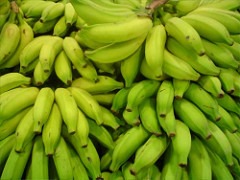
GM/Biotech Crops Report – December 2017
4th December 2017- GM/Biotech Crops Monthly Reports (BELOW) form part of BCPC’s free three-tier Biotech Crops Info service.
- This service also includes a weekly round-up of news from around the globe – see BCPC Newslink GM Crops section.
- Plus – Free access database on over 300 GM/biotech products covering 23 crops in the global market visit BCPC’s GM/Biotech Crops Manual – Register here for free access.
Already registered? Click here
GM/Biotech Crops Monthly Report December 2017
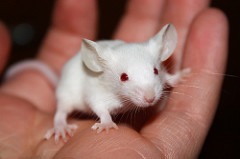 |
In vivo editing of human genes Doctors in California are attempting to edit the genes of a patient with Hunters Syndrome (an inability to break down mucopolysaccarides) by just infusing the treatment into his bloodstream. The treatment has been designed to only become active when it reaches the patient’s liver. If it works as well in humans as it has done in mice we are on the verge of a whole new medical technology. More Pic Source:Stephen Hillier |
|---|---|
| Ready-salted rice plants
Increasingly saline soils are a concern world-wide but scientists in China have developed varieties of rice that can tolerate saline soils. Two hundred commercially viable varieties are being tested with some very encouraging yield results. More Pic Source: Amanda W |
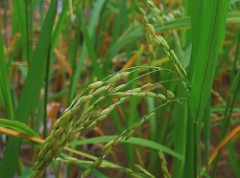 |
 |
Blight-resistant Maris Piper
The Sainsbury laboratory in Norwich has introduced a gene from wild potato into the variety Maris Piper with the result that it is now resistant to blight. Their next step is to try to make them less prone to bruising – a trait tat is already available in some potato varieties grown commercially in America. More Pic Source: Alan Parkinson |
| New CRISPR editing system
CRISPR-Cas9 editing has transformed gene editing but now a new system CRISPR-Cas13 will allow targeting of specific RNA areas and nucleotides with even temporary editing changes possible. More Pic Source: Karl Ludwig Poggemann
|
 |
 |
Tulips in Amsterdam
Dutch scientists have sequenced the genome of tulips in the expectation that this will enable them to develop better tulips faster. This is a notable achievement because the tulip genome in 11 times larger than the human genome. More Pic Source: Liz West |
| Salt-tolerant mung beans
Mung beans are an important source of protein in South-east Asia but growth is limited because of the predominance of saline soils in that area. Now researchers have developed salt-tolerant mung beans by expressing a gene from Arabidopsis in the plant and co-incidentally this also improves herbicide tolerance. Pic Source: Frost Museum |
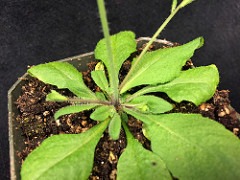 |
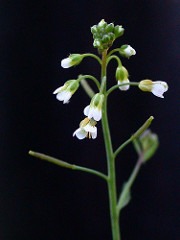 |
Improved crop yields
Wageningen University have identified a naturally-occurring strain of Thale Cress that can cope with higher light levels and the system of genes that allows it to do this are present in all plants. It suggests that photosynthetic efficiency could be improved using natural genetic variation which promises more yield from lower soil, water and nutrient inputs. A few months ago we reported a similar claim for enhanced wheat yields from Rothamsted. More Pic Source: Tico |
| Golden Wonder Potatoes
Many crop plants have been developed with enhanced vitamin A content and Golden rice was probably the first of these. Now Ohio State University has achieved this enhancement in potatoes and it also gives improved vitamin E content. More Pic Source: Sam Chills
|
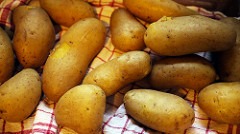 |
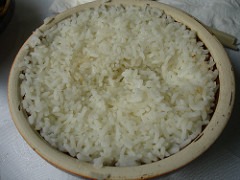 |
Cadmium in rice
I know I should soak my rice before cooking it to reduce the arsenic content but apparently it can also contain a lot of cadmium and in areas where rice is the main source of carbohydrates cadmium poisoning is a serious risk. Now the Hunan Hybrid Rice research Centre has used CRISPR-Cas9 editing to knock out one of the metal transport genes in rice. It lowers the cadmium content of the grains but can the crop still get the copper, boron, manganese and magnesium that it needs? More Pic Source: Gigijin |
| Bananas escape extinction
Commercial bananas are all derived from the same original stock derived from original plants held at Chatsworth! This lack of genetic diversity has always carried the risk of an epidemic of some disease devastating the whole crop. Of greatest threat was Panama disease, a form of Fusarium wilt disease. Now researchers in Queensland have engineered a strain of the crop that is resistant to this threat by taking a gene from wild bananas and inserting it in the Cavendish line: More Pic Source: Silva Chuva |
|
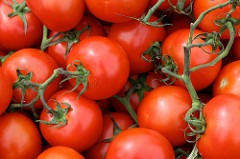 |
Tomatoes save African wheat
Stem rust is a devastating disease of wheat grown in Africa but splicing a gene from tomatoes into the genome of the wheat seems to have conferred resistance. This feat was achieved by the University of California and may well have halted a world-wide epidemic of stem rust in wheat. More Pic Source: Tony |
| Tomatoes save tobacco and cotton
Verticillium wilts are soil-borne diseases that affect many plants and they are difficult to control. Tomatoes have a surface immune receptor (VE1) that recognises some strains of Verticillium and switches on an immune response. Now the gene for this receptor has been spliced in to tobacco and cotton with the result that these plants now also recognise the disease and switch on their own immune response systems. More Pic Source:Ryan & Sarah Deeds |
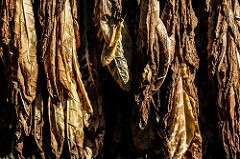 |
THE LATEST ADDITIONS TO THE GM/BIOTECH DATABASE ARE:
- DAS81419 x DAS44406 – soybean with Lepidopteran insect resistance and tolerance of glyphosate, glufosinate and 2,4-D approved for food use in Mexico.
- MON87751 – soybean with Lepidopteran insect resistance approved for food use in Mexico.
- MON87427 x MON89034 x MIR163 x NK603 – maize with glyphosate tolerance and Lepidopteran insect resistance approved for food use in Mexico.
- MON87427 x MON89034 x TC01507 x MON87411 x 59122 – maize with tolerance of glufosinate and glyphosate and resistance to Lepidopteran and Coleopteran insects approved for food use in Mexico.
- 3006-210-23 x 281-24-236 x MON88913 x Cot102 x 81910 – cotton with Lepidopteran insect resistance and tolerance of glufosinate, glyphosate and 2,4-D approved for food use in Mexico.
- MON87705 x MON87708 x MON89788 – soybean with modified oil content and tolerance of glyphosate and dicamba approved for food use in Mexico.
- New stacked event – MON87708 x MON89788 x A5547-127 – soybean with tolerance of glufosinate, glyphosate and dicamba approved for food use in Mexico.
- Bt11 x MIR162 – maize with Lepidopteran insect resistance and tolerance of glufosinate approved for food use in Mexico.
- Bt11 x TC1507 x GA21 – maize with Lepidopteran insect resistance and tolerance of glufosinate and glyphosate approved for food use in Mexico.
- Bt11 x MIR162 x MON89034 x GA21 – maize with Lepidopteran insect resistance and tolerance of glufosinate and glyphosate approved for food use in Mexico.
- MON87427 x MON89034 x MIR162 x MON87411 – maize with resistance to Coleopteran and Lepidopteran insects and tolerance of glyphosate approved for food use in Mexico.
- MON89034 x TC1507 x NK603 x MIR162 – maize with Lepidopteran insect resistance and tolerance of glufosinate and glyphosate approved for food use in Mexico.
FOR INSTANT ACCESS TO GM BIOTECH MANUAL CLICK HERE (Registration required)
Already Registered? Click here to access


